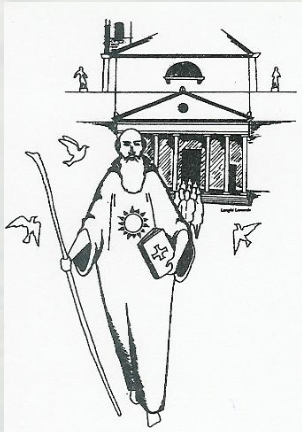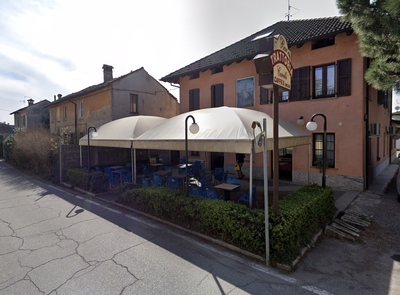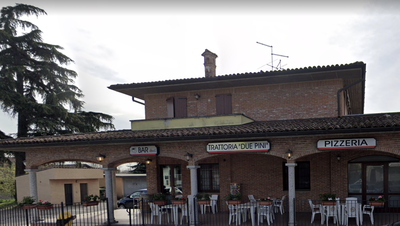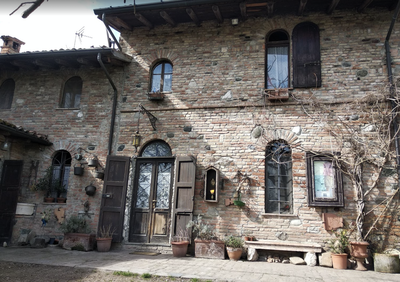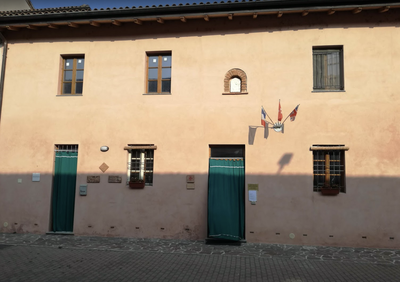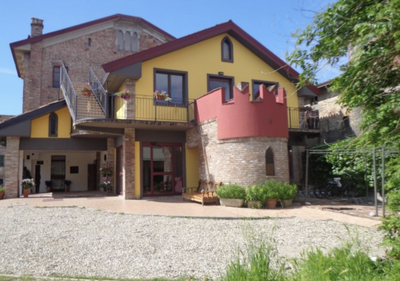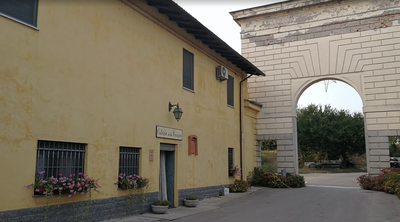
17. San Colombano al Lambro to Sant'Imento
7 points of interest

Chiesa San Colombano Abate - Amis St Colomban St ColumbanChurch of San Colombano Abate
The parish of San Colombano Abate was founded in 1499 by Pope Julius II. The church, characterized by a neoclassical 19th century facade, has three naves. Inside, there are paintings by Bernardino Campi and Gian Giacomo Barbelli. Among the side chapels is the votive chapel of the Rosary, built after the Manzoni plague in 1630.
Possibility to have a stamp on your credential (pilgrim passport).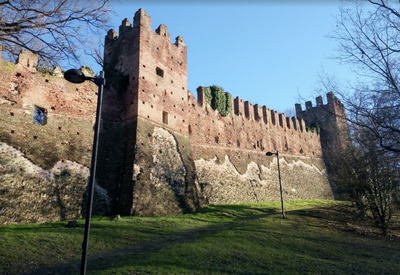
Castello HistoricalCastle
Its construction may be contemporary with the Bobbio Abbey in the 6th century. It is part of the history of San Colombano through the centuries. It was destroyed in 1158 by the German Emperor Frederick I called Barbarossa who rebuilt it in 1164 for its strategic position. Over time, the castle has undergone many transformations depending on the owners, Visconti-Sforza (14th), Certosini (18th), Belgioioso.

Lazzaretto - Amis St Colomban HistoricalLazzaretto
This typical 17th century Lazzaretto reminds posterity of the sad event of the 1630 plague in Milan.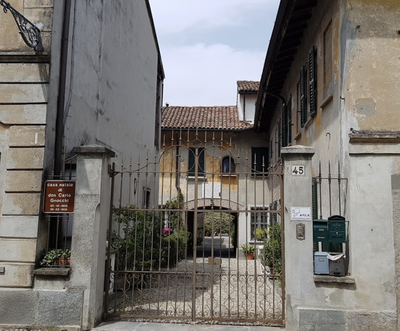 Historical
HistoricalBirthplace of Don Carlo Gnocchi
Born here in 1902, Don Carlo died in 1956 and was beatified in 2009.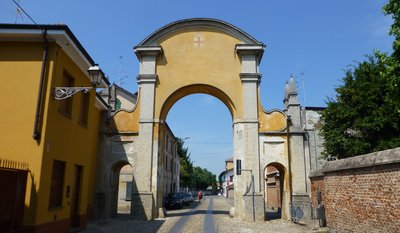
Portone - Amis St Colomban HistoricalDoor
The door was built by the prior of the Certosa Don Giovanni Abbiati in honour of the privilege granted by King Charles II of Spain in 1691 which gave the village the title of Oppidum.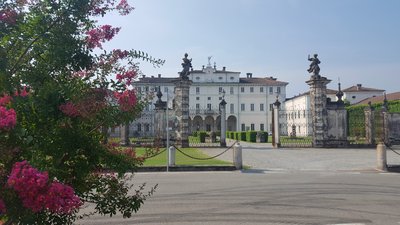
Villa Litta Carini - Amis St Colomban HistoricalVilla Litta Carini
A historic residence from the mid-seventeenth century built by the famous architect Giovanni Ruggeri, Villa Litta Carini is now considered a national historical and artistic heritage of the Fine Arts. Attended by illustrious personalities such as King Umberto I and Giacomo Puccini, this palace transports in its magnificent atmosphere and enchants with its evocative beauty.
Learn more about it.
 Historical
HistoricalCastle of Sant'Imento
The date of construction of the castle is not known, but the first documents relating to the fortress date back to 1291, the year in which the church of Sant'Imento was built.
Over the centuries, the castle has undergone various vicissitudes and passed through the hands of many owners.
Description
- Turn right onto Via Ottavio Steffenini followed until the next traffic lights marking the intersection with Viale Trieste (SP23). Continue straight ahead on Via San Giovanni di Dio (signposted Cammino di San Colombano) until you reach a fork in the road with three roads. Take the right-hand Via Privata Colombana (signposted), leave the town and continue on the dirt road heading east despite several changes of direction at right angles. At a farmhouse (Casoni di Campagna), the road is once again paved, continue eastwards until it turns south.
- At this bend in the road, continue straight ahead on the track which then crosses a canal. Follow the left bank of the canal, passing close to the Lambro River before reaching the SP234, which is crossed by a tunnel. Immediately afterwards, turn right twice in succession to get back onto the main road at a restaurant. The path is now shared with the Francigena, as shown by the sign on the right-hand side of the busy road. A narrow passage is reserved for pilgrims to cross the river Lambro.
- After the bridge, turn right onto the track and follow the Francigena signs. This dirt track runs along the left bank of the Lambro and then turns left after passing under a high voltage power line. Reach the hamlet of Corte Sant'Andrea (restaurant) and the embarkation point ("Transitum Padi" porto) after booking.
- Crossing the Po by boat with Danilo to disembark in Soprarivo, no doubt with the first pilgrims we met on the Francigena. Good moments of exchange, stamps on the credit card and information in the guest book kept by Danilo.
- At the Guado di San Colombano e di Sigerico, leave the Francigena and head west along the right bank of the Po River before turning left and heading south. Avoid the quarry with a hairpin turn before crossing a road heading south again towards Sant'Imento.
If it is not possible to cross the river Po, it is advisable to take the train to Lambrinia, to reach Piacenza and from there, still by train, to reach Rottofreno to return to the path 3.5km from the finish of the stage at the church of Pieve di Verdeto.
Another possibility proposed by the Amici di San Colombano association is to follow the Orio Litta-Sant'Imento variant, about 41 km long, which passes through Fombio (visit to the church dedicated to Saints Peter Paul and Colomban, dating from the 17th century) and Piacenza. This variant can be downloaded from www.thecolumbanway.org.
This variant requires an additional two days of walking.
- Departure : Church San Colombano Abate, Piazza Beato Don Carlo Gnocchi 1, 20078 San Colombano al Lambro
- Arrival : Church San Giovanni Battista, Via Castello, 29010 Sant'Imento
- Towns crossed : Lombardia and Emilia-Romagna
Altimetric profile
Transport
Lambrinia :
Trenord, Lambrinia station (4 km from San Colombano, along the route),
line R37 with connections to Pavia and Codogno,
tel. 02-72.49.49,
trenord.it.
Rottofreno:
Trenord, Rottofreno station (3.5 km from Santimento),
line R34 with connections to Piacenza, Pavia and Milan,
line R4I with connections to Piacenza and Voghera.
trenord.it
Bus:
Sant'Imento :
Seta, bus line E5 connections with Piacenza,
tel 840-00.02.16 / whatsapp 334-21.94.058 (Mon-Sat 7-19),
www.setaweb.it.
Report a problem or an error
If you have found an error on this page or if you have noticed any problems during your hike, please report them to us here:


